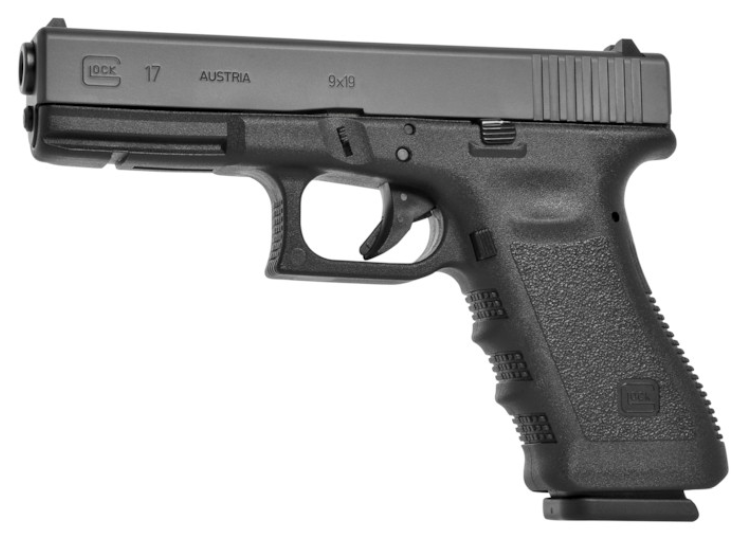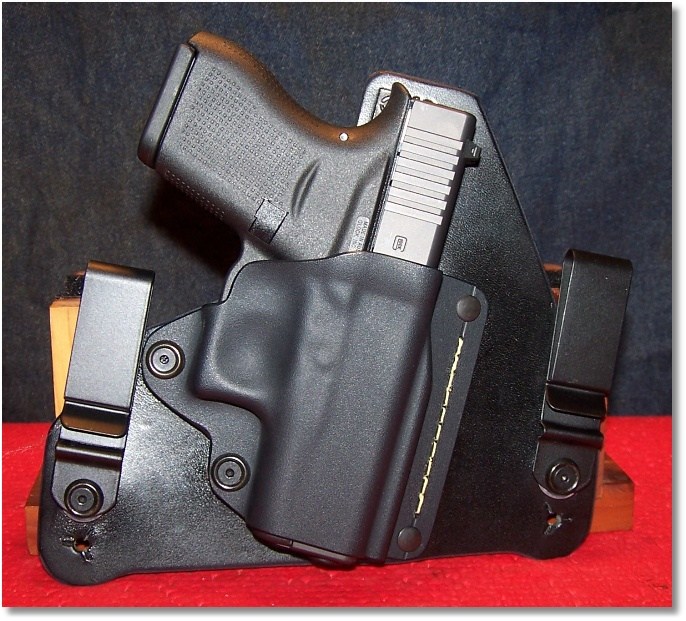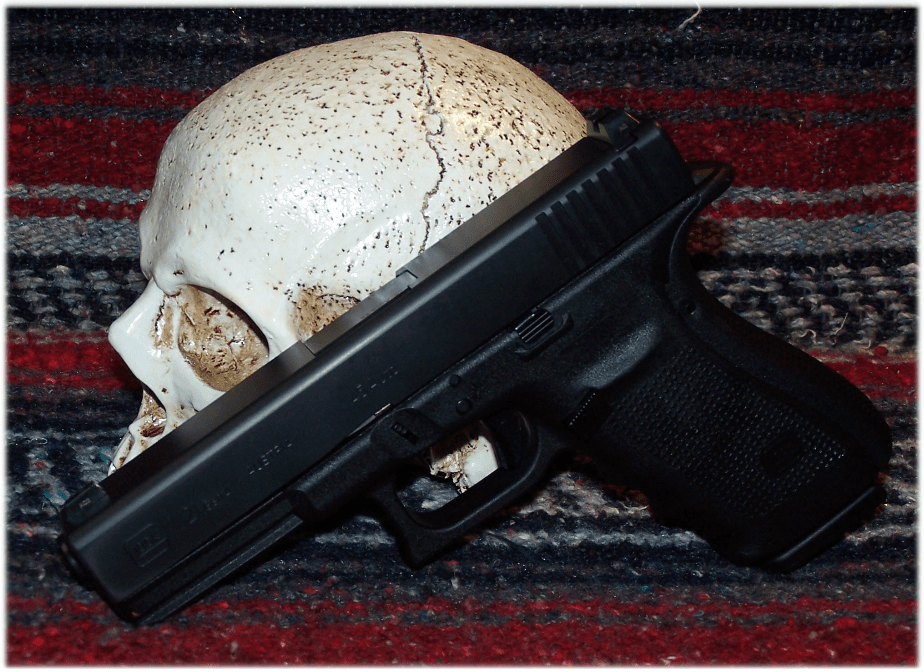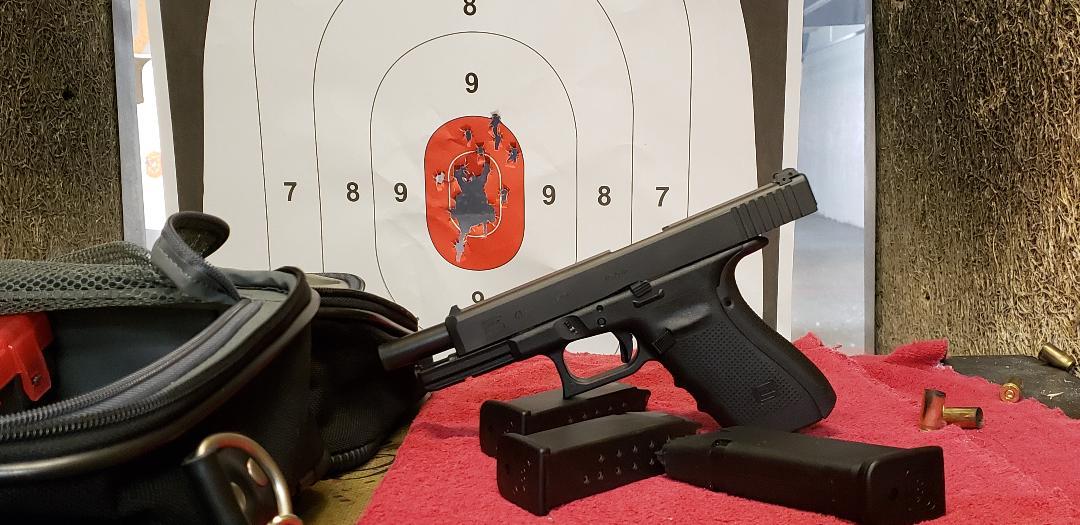There is No Problem, and That’s the Problem

The first time that I held a Glock G17 I thought, “What a monstrosity!” It had a wide grip like a Beretta 92FS, but it was at a weird angle. The slide was like a plank of wood with its squared-off shoulders, although it did have decent sights. The weight was next to nothing, as compared to the “government” model 1911 that I carried daily. It was chambered in 9mm, which I had no heartburn with, but my favorite carry cartridge was the .45 ACP. The controls, per se, was a very thin slide lock and magazine release button. The trigger had this thing in the middle that, if not pressed, would not allow the trigger to be pulled. And, there was this “striker” thing that was a substitute for a firing pin.
The trigger pull was, well, atrocious as compared to most of the triggers I had pulled over the years. It wasn’t that it was heavy, it was that it was mushy, and it felt like a plastic trigger – plastic gives, metal doesn’t. The sight were also polymer. Who puts plastic sights on a gun? Even the guide rod was plastic. “This gun is just set up to fail,” I thought.
The Glock G17 had a “Spartan” look to it. That appealed to me, as I like things simple. The thickness of the slide; however, negated the deal since I like to hide guns on my person and the G17 was going to be a ‘Hoss’ to hide due to its width.
I handed the G17 back to the salesperson with a; “Meh, I don’t need one.” That was a long time ago.
Fast forward to a future time and I was presented with an opportunity to purchase several Glock pistols at a clearance price. Thinking that I could turn a few dollars, three 9mm Glock pistols (G17 GEN3, G26 GEN3, and a G19 GEN4), and three .45 ACP Glock pistols (G21 GEN3, G30SF GEN3, and a G36 GEN3) were purchased. Every pistol except the G19 was on closeout, as the LGS was trying to sell all the GEN3 models while building inventory with the new GEN4 models. Believe it or not, those pistols reside in a case, unfired, to this day. In short, I was never enamored by the Glock line to even shoot them. Every time I pick one of these pistols up I am reminded of the saying about “Glock Blocks.”
Time marched on and, at some point, I decided to begin writing reviews of firearms that I owned. Being a writer by trade, writing reviews simply became a hobby and past time.

I believe that I was writing a review on the Springfield XDs when I read a review on the new Glock G42 and G43. I wasn’t interested in a .380 caliber, but a comparison between the G43 and a XDs might be interesting. A search for a Glock G43 began and one was found soon enough. The G43 turned out to be an excellent shooter, a review was written, a comparison between the G43 and the G26, and I started to develop more of a curiosity with the Glock line of pistols.
It seems that I have always been torn between the Glock and Springfield Armory pistols of polymer persuasion and, in many ways, I still am. The XD line of pistols from Springfield Armory are excellent firearms, and I enjoy several of them. In fact, when I was looking for a firearm for the .40 Smith & Wesson and the 10mm Auto, Springfield XDm pistols won out over all in price and value. Some people might take exception to that, given the Springfield Armory 2A controversy several years ago. However, time has moved on and, I hope, so has the issue.
But why, you might ask, did the Glock pistols in these caliber not fit the bill? I’ll get into that shortly.

When the Glock G45 was introduced, I had a chance to handle one at one of my favorite gun shop. The G45 fit in my hand perfectly, and I knew that I had to have one to write a review, which I do and did. A greater appreciation of the Glock pistol grew and pretty soon I was writing a Glock G41 review. For the limits of concealed carry, the G41 covered the .45 ACP side of the house; whereas, the G34 will cover the 9mm side of the house. Then, there is the Glock G48, which will take care of a single-stack 9mm review in the future.
And, the above is what is wrong with the Glock pistol; there is a Glock pistol for every application you may have from sport shooting, hunting, plinking, competition, self-defense, home-defense, customizing, etc. I could sell every pistol that I own and buy every Glock pistol currently available (64 at the time of this writing) and I would have a pistol that would cover all my personal defense, home defense, target shooting, hunting, and competition needs in a variety of calibers including 357 and .45 G.A.P.
Regardless of the Glock-claimed “Perfection” the Glock pistol is far from perfect, as is any mechanical device that shoots projectiles. A Glock pistol; however, right out of the box, is a “court-defensible” pistol. Here is what I mean by that; you do not have to do anything to a Glock pistol to make it a pistol that can be used for self-defense. If you do make changes to a Glock pistol, it is only because of your personal wants and needs. The pistol itself, with proper human intervention, is quite capable of being a defensive pistol.
I can change grip adapters, and even sights, to make the Glock pistol better for me, but the intrinsic wealth of being a totally suitable pistol for self-defense doesn’t change. I can add a grip sleeve, stipple the grip, and change the barrel for a fully-supported barrel that can fire lead ammunition. But the fact remains that the basic Glock pistol right out of the box is highly reliable, accurate, and is now a proven firearm in 48 countries. As I said, except for personal preference, I can’t justify changing a thing about a Glock pistol. The damn thing just works.
Now, let’s get back to the .40 Smith and Wesson and 10mm Auto thing. The only reason that a Glock pistol was not chosen was the unsupported barrel. My concerns may be unfounded, as there are plenty of .40 Smith and Wesson and 10mm cartridges being fired through these pistols. However, I felt a bit more comfortable with the Springfield Armory XDm pistols for these cartridges. These high-pressure pistol cartridges were relatively new to me and, not knowing what to expect, I would rather err on the side of caution. An unsupported barrel, like that on the Glock pistol, just didn’t give me warm fuzzies. The Springfield Armory XDm pistols were also less expensive than the Glock counterparts, and that did play a part in this as well from an investment in new caliber standpoint. A Glock pistol in .40 S&W and 10mm Auto is probably not in my future, as I feel that my pistol needs for those calibers has been satisfied.

Is the price of a Glock pistols worth the benefits of owning one? Of course, we all like to get the best bang for the buck. I have read some complaints about Glock pricing, as compared to ‘comparable’ products, being on the high side. And I can’t say that I disagree with that. Cost was one of the factors for my purchasing the Springfield XDm for several calibers that I could have covered with a Glock pistol; the XDm was significantly less. As the old saying goes; “Ya’ pay a quarter and takes yo’ chances!” However, some education can lessen the chances of being ‘short-changed’ in your investment. Are we paying for Glock “Excellence?” Probably so, and we continue to pay it. With each ‘Generation’ of Glock, the price of ownership seems to go up a bit, and Gadsen is not giving gun dealers much slack to work with. It’s up to the prospective buyer to determine if the show is worth the price of admission.
Here is the tally, by caliber, of semi-automatic pistols that Glock has available (at the time of this writing) at their U.S. website:
- 9×19 = 27
- .380 Auto =1
- .357 = 6
- .40 = 14
- .45 Auto = 8
- .45 GAP = 3
- 10mm = 5
Obviously, more models are available in 9mm, followed by .40 Smith & Wesson, followed by .45 ACP. In the civilian market, sales of the G19 (and even 19X) is doing well, but that may change with the advent of the G45; a G19 slide on a G17 frame. While I don’t think that the .40 Smith and Wesson is going away, I do think that it may be regarded like the .380 Auto is to the 9mm. The 10mm may now gain some steam, and it seems to be doing that, as it is a very versatile cartridge.
While I am still an advocate of the 1911 for self-defense, I do cater to the concealed carry community with my reviews as much as possible. I try to cover what I think would make a good concealed carry handgun. I cannot; however, afford to have every flipping pistol on the planet and must be selective in my purchasing, but can widen that a bit by reviewing range rentals.
I could make a blanket statement right now and say that I don’t believe that there is a Glock pistol that cannot be concealed under the right conditions. So, I will. “I don’t believe that there is a Glock pistol that cannot be concealed under the right conditions.”
The last thing to be said about why there is a problem with Glock pistols comes from personal experience. I live about an hour drive away from the Glock facility in Smyrna, Georgia. If I need something for any of my Glock pistols, I can make a call and talk to someone at Glock. And usually after that I drive to Smyrna, Georgia, check in at the front gate, drive to the customer service area, and usually any problems are taken care of right then. One drive resulted in a set of Glock Night Sights being installed on a G41. The installation took less time than the drive to the facility. Therein lies the problem; Glock customer service is simply too good.

I do believe that the Glock pistol has had as much influence in the firearm community as the 1911 did in its day, and who’s influence is still being felt. The Glock was not the first polymer pistol. The Heckler & Koch VP70 was the first polymer-framed handgun, predating the Glock 17 by 12 years. And I am sure that the polymer pistol is not going anywhere soon. For now, the Glock is the “king.” It is the pistol that all other polymer pistols are compared against.
Aside from little nit-picking things that provide us with some nit-picking ammunition to complain with, the Glock line of pistols are excellent. And, that’s the problem with Glock pistols – there is no real problem.
![]()

